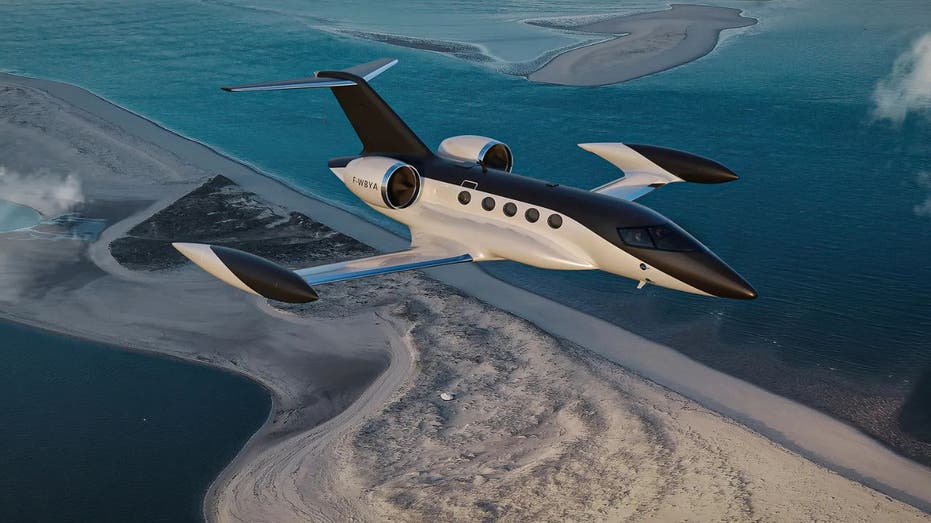Revolutionizing Air Travel: The Zero-Emissions Hydrogen-Electric Jet

French Startup Beyond Aero Takes Flight with the BYA-1
In a world increasingly focused on sustainability, French startup Beyond Aero is soaring to new heights with its groundbreaking hydrogen-powered jet, the BYA-1. This innovative aircraft goes beyond mere concept; Beyond Aero is committed to launching it by 2030, promising to transform our perceptions of air travel. With a focus on both cost efficiency and environmental sustainability, the BYA-1 could significantly disrupt conventional aviation practices.
Designing the Future: The BYA-1’s Unique Features
The BYA-1 is not your typical business jet. This 10-seat aircraft has been meticulously designed with a battery-free hydrogen-electric propulsion system, optimizing the use of gaseous hydrogen. This clean-sheet architecture overcomes the challenges of retrofitting existing aircraft with hydrogen technology, paving the way for a new era in aviation.
Hydrogen Fuel System and Performance
Equipped with six hydrogen cylinders—four integrated along the fuselage and two at the wingtips—the BYA-1 harnesses the power of six 400-kW fuel cells. These cells convert hydrogen into electricity and water vapor, powering electric jet turbines that can reach a peak power output of 2.4 MW. With this setup, the BYA-1 can transport six passengers for a distance of 921 miles at a cruising speed of 357 mph. If the cruising speed is reduced to 276 mph, the range increases to an impressive 1,381 miles.
Cost Efficiency and Operational Savings
Beyond Aero emphasizes that the BYA-1 will deliver remarkable operational and cost benefits, including a reduction in operational costs by up to 55%. This is achieved through fewer parts and simplified maintenance, thanks to a modular engine unit designed for easy ground-based servicing. Additionally, the BYA-1 is projected to save 17% in fuel costs compared to traditional Jet-A1 aviation fuel by 2030, with further reductions anticipated as the market for green hydrogen becomes more viable.
Environmental Impact and Passenger Comfort
The hydrogen-electric propulsion system promises substantial advancements in both environmental sustainability and passenger comfort. The BYA-1 emits zero carbon emissions during flight, contributing to the aviation industry’s goal of minimizing its carbon footprint. Furthermore, the aircraft is designed to be significantly quieter, with claims that the cabin will be 15 dB(A) quieter than traditional jets, translating to a perceived noise reduction of approximately 50%.
Certification and Future Prospects
Beyond Aero is actively pursuing certification for the BYA-1, having filed for design organization approval with the European Union Aviation Safety Agency. The company is working closely with regulators to establish the necessary conditions for certification. Demonstrating its commitment to innovation, Beyond Aero successfully conducted France’s first manned hydrogen-electric flight using a prototype fuel system in an ultralight aircraft.
With a robust financial backing of $44 million and letters of intent for 108 sales worth $914 million, Beyond Aero is positioning itself as a formidable player in the aviation industry. The potential of the BYA-1 could revolutionize air travel and accelerate the shift towards cleaner aviation technologies, playing a crucial role in achieving zero-carbon goals by 2050.
The Future of Air Travel: Will Hydrogen-Electric Jets Become Mainstream?
As we examine Beyond Aero’s BYA-1, it’s clear that the potential for quieter, cleaner, and more efficient flights holds significant promise. The advantages of hydrogen-electric jets are substantial, benefiting both passengers and the environment. While challenges remain before this technology can be widely adopted, innovations like the BYA-1 mark a pivotal moment in the evolution of air travel.
What do you think? Will hydrogen-electric jets become a mainstream option for commercial flights in the next decade? Share your thoughts with us!
For more insights on technology and security alerts, consider subscribing to our newsletters for the latest updates. Your feedback and questions are always welcome as we navigate the future of aviation together.




